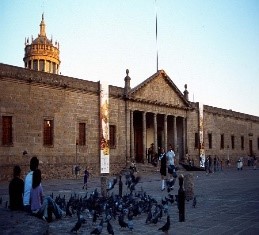Introduction |
The Mexican economy has been growing at an average rate of 2.1 percent during the last 10 years despite the recent complicated international environment. The strength of Mexico in terms of its economy underlies in the responsible economic, financial, and commercial policies, which aims to strengthen the domestic market. For example, Mexico’s economic development strategy includes the strengthening of consumption in effect to social programs and greater financial inclusion, promoting private investment in strategic sectors, increasing public investment, increasing trading relations with other countries for the reconstruction of global value chain. Mexico is considered as the 15th largest economy in the world, while leading exporter in the Latin America. It has a Gross Domestic Product (GDP) of $1,269 billion, with a nominal GDP of $9,946. As an emerging global player in the economy, Mexico has a Foreign Direct Investment of $29.3 billion placing 19th in the World Export Ranking. Mexico is becoming a fundamentally middle-class country with 50 percent of its population as middle class, and 30 percent being in the upper class. Ideally, the economy of Mexico will continue to prosper for the following years. This section is designed to showcase the different information regarding Mexico’s growing economy through statistics and data provided by different government agencies of Mexico. |
| Economic Situation in the States of Mexico | |||
|
|
 |
 |
|
| Aguascalientes | Chiapas | Chihuahua | Guerrero |
 |
 |
 |
 |
| Jalisco | Michoacan | Morelos | Nuevo Leon |
|
|
 |
||
| Puebla | Sonora | ||
|
|
|||
| Tlaxcala | |||
Source: Ministry of Economy, INEGI, BANXICO, FMI, Global Trade Atlas, World Bank, UNCTAD |
|||
| Mexico’s Free Trade Agreement |
 |
Mexico is considered to be one of the most open economies in the world, with limited restriction to trade. Mexico has access to 50 countries through its mutually Free Trade Agreements (FTA). Mexico’s FTA with Pacific alliance comprise 41% ($2,707) of Latin American and Caribbean GDP. On the other hand, Mexico’s FTA with European Union (EU) shared 22.9% ($19,974) of world’s GDP. Meanwhile, USMCA has a GDP of $24,440 which comprises of 28% of world’s GDP. Lastly, the FTA of Mexico with CPTPP shares 12.9% ($11,262) of the overall world’s GDP. |
Source: Ministry of Economy, INEGI, BANXICO, FMI, Global Trade Atlas, World Bank, UNCTAD |
| Mexican Economy in Latin America | |
 |
Mexico ranked 2nd largest economy in Latin America, after Brazil with a total of $1,268,870 billion GDP. However, even if it ranked 2nd, it is considered as the leading exporter in the whole Latin America region. One-thirds (1/3) of the exports of whole Latin America, has Mexican origins. |
| Source: Ministry of Economy, INEGI, BANXICO, FMI, Global Trade Atlas, World Bank, UNCTAD | |
| Mexico’s Gross Domestic Product Trend 2008-2020 |
 |
Mexico’s Gross Domestic Product (GDP) is gradually increasing through time. The table shows the seasonally adjusted trend from the first quarter of 2008 to the fourth quarter of 2020. As of the fourth quarter of 2020, the year to end GDP of Mexico is at $1.2 trillion. |
| Source: Ministry of Economy, INEGI, BANXICO, FMI, Global Trade Atlas, World Bank, UNCTAD |
| Mexico’s Foreign Direct Investment | |
 |
In the period from January-September 2020 the countries with more investments in Mexico were firstly, its partners in USMCA (United States and Canada), followed by a significant number of European countries (Spain, Netherlands, Germany, United Kingdom), and Asian countries (Japan). In 2020 Mexico received foreign direct investment for more than USD 29 billion, most of it invested in the manufacturing industry. |
| Source: Ministry of Economy, INEGI, BANXICO, FMI, Global Trade Atlas, World Bank, UNCTAD | |





